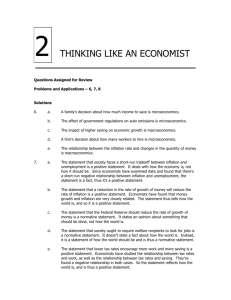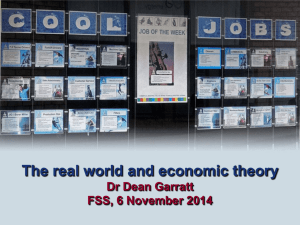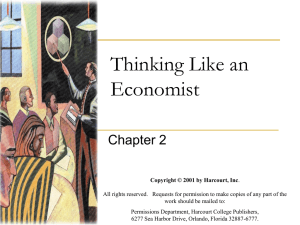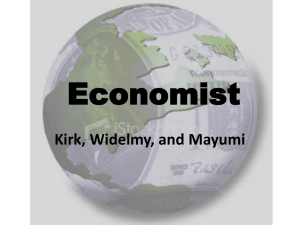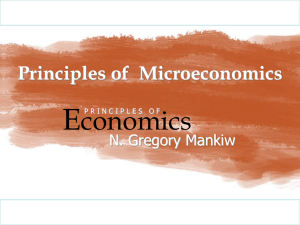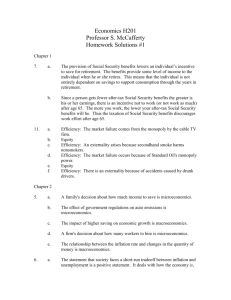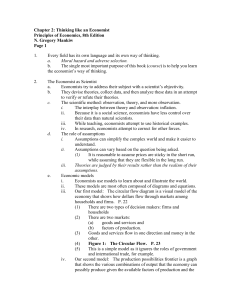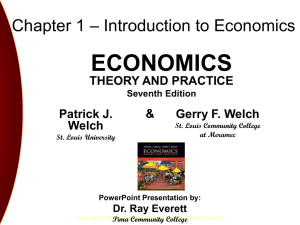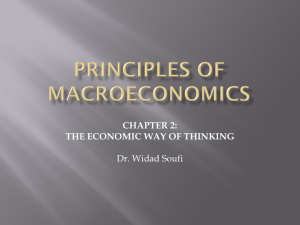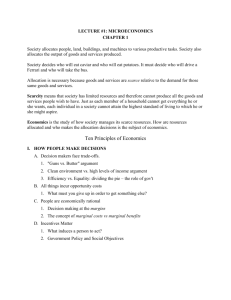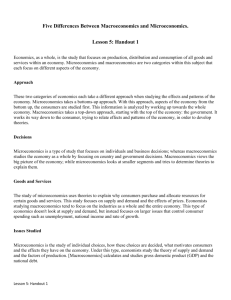Chapter 2: Thinking Like an Economist What economists do
advertisement
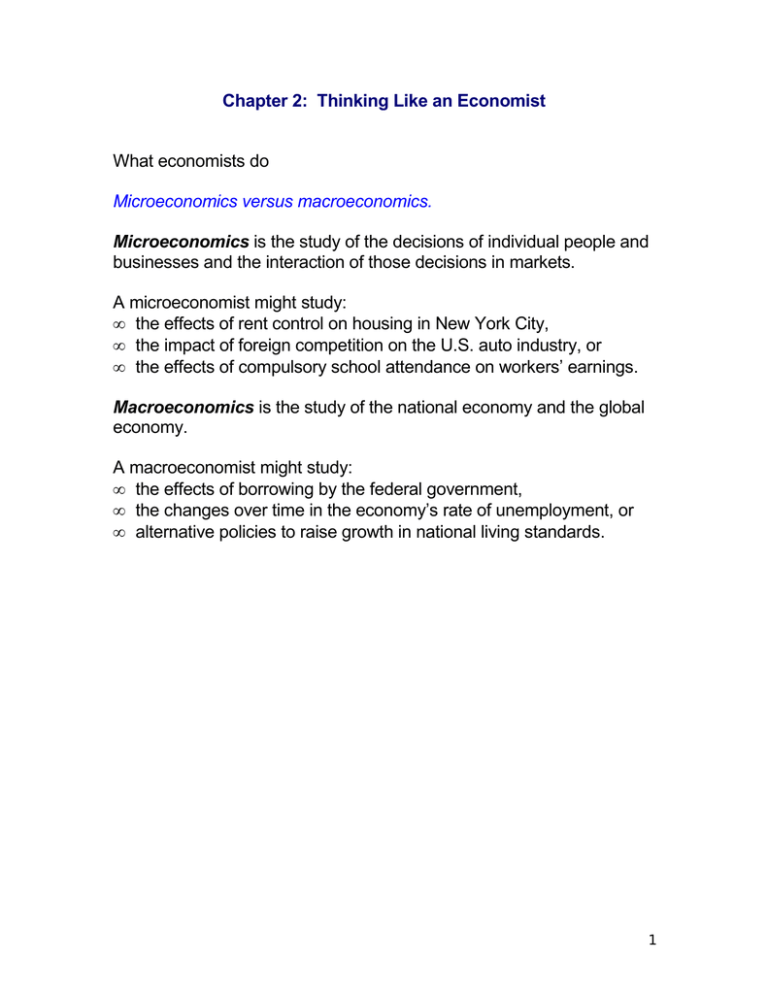
Chapter 2: Thinking Like an Economist What economists do Microeconomics versus macroeconomics. Microeconomics is the study of the decisions of individual people and businesses and the interaction of those decisions in markets. A microeconomist might study: • the effects of rent control on housing in New York City, • the impact of foreign competition on the U.S. auto industry, or • the effects of compulsory school attendance on workers’ earnings. Macroeconomics is the study of the national economy and the global economy. A macroeconomist might study: • the effects of borrowing by the federal government, • the changes over time in the economy’s rate of unemployment, or • alternative policies to raise growth in national living standards. 1 Positive analysis versus normative analysis The economist as a (social) scientist ….why is unemployment higher for teenagers than for older workers? The economist as a policy adviser. …what should the government do to improve the economic well-being of teenagers? Scientists and policy advisers have different goals and use different language. Ms. P says “Minimum-wage laws cause unemployment.” Mr. N says “The government should raise the minimum wage.” Ms. P • is making a positive statement • is speaking like a scientist • is making a (testable) claim about the way the world works. Positive statements are descriptive. Mr. N is making • a normative statement • a statement about what ought to be (⇒depend on values) • a statement that can not be tested. Normative statements are prescriptive 2 The economist as a scientist To try to understand how the economic world works economists • devise theories, • collect data, and • analyze these data in an attempt to verify or refute their theories. Three steps: 1. Observation and measurement 2. Model building An Economic Model is a description of some aspect of the economic world that includes only those features of the world that are needed for the purpose at hand. What is included and left out from a model results from assumptions about what is essential. Three steps: 1. Observation and measurement 2. Model building 3. Testing models • Use statistical tools called regression analysis • Testing models helps develop economic theories. 3 The economist as policy advisor • Economists as a group are often criticized for giving conflicting advice to policymakers. • Economists may disagree about the validity or alternative positive theories about how the world works. • Economists may have different values and, therefore, different normative views about what policy should try to accomplish. Your book lists areas of agreement among economists (table 2-2). 4
